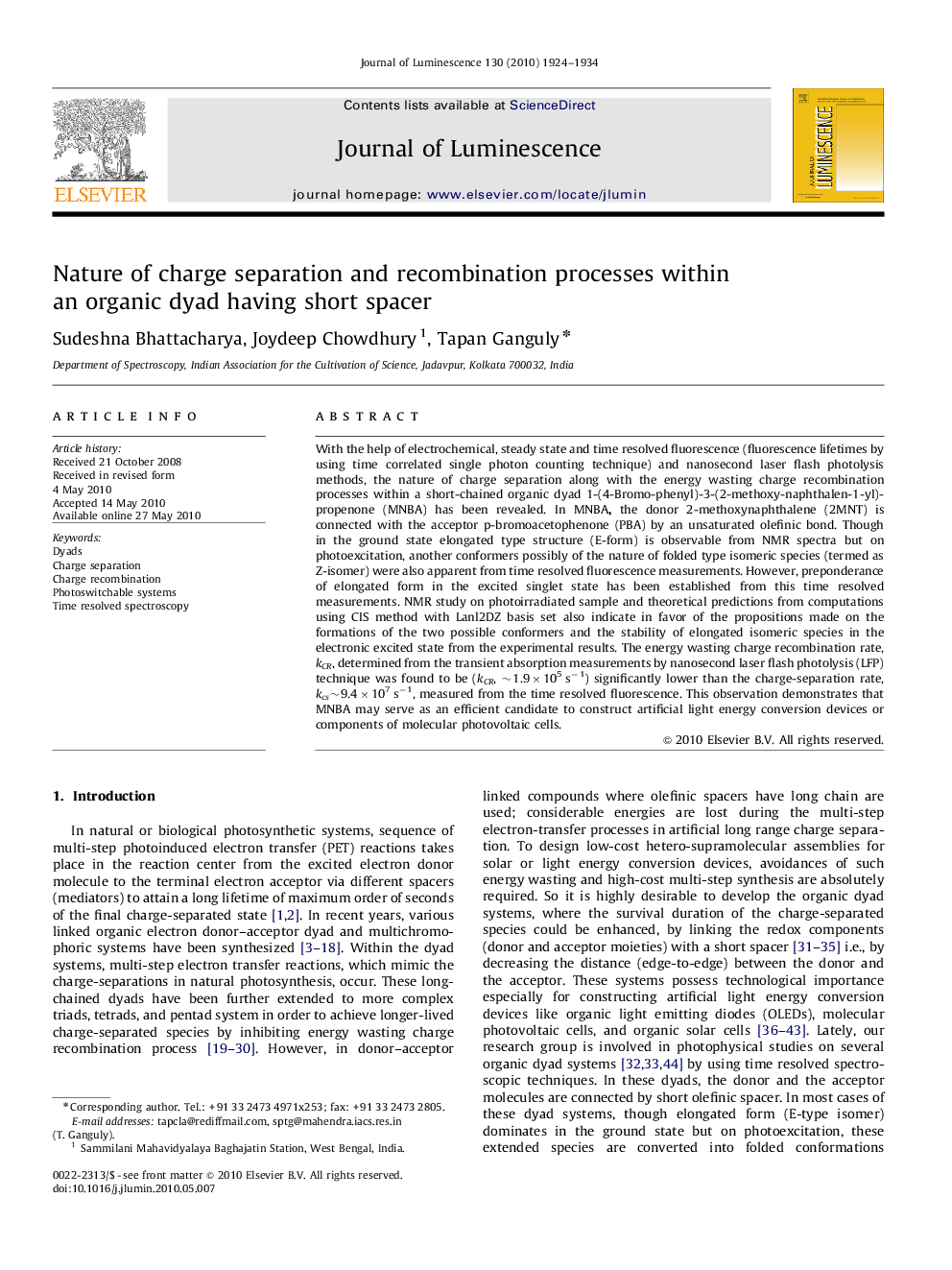| Article ID | Journal | Published Year | Pages | File Type |
|---|---|---|---|---|
| 5402519 | Journal of Luminescence | 2010 | 11 Pages |
Abstract
With the help of electrochemical, steady state and time resolved fluorescence (fluorescence lifetimes by using time correlated single photon counting technique) and nanosecond laser flash photolysis methods, the nature of charge separation along with the energy wasting charge recombination processes within a short-chained organic dyad 1-(4-Bromo-phenyl)-3-(2-methoxy-naphthalen-1-yl)-propenone (MNBA) has been revealed. In MNBA, the donor 2-methoxynaphthalene (2MNT) is connected with the acceptor p-bromoacetophenone (PBA) by an unsaturated olefinic bond. Though in the ground state elongated type structure (E-form) is observable from NMR spectra but on photoexcitation, another conformers possibly of the nature of folded type isomeric species (termed as Z-isomer) were also apparent from time resolved fluorescence measurements. However, preponderance of elongated form in the excited singlet state has been established from this time resolved measurements. NMR study on photoirradiated sample and theoretical predictions from computations using CIS method with Lanl2DZ basis set also indicate in favor of the propositions made on the formations of the two possible conformers and the stability of elongated isomeric species in the electronic excited state from the experimental results. The energy wasting charge recombination rate, kCR, determined from the transient absorption measurements by nanosecond laser flash photolysis (LFP) technique was found to be (kCR, â¼1.9Ã105Â sâ1) significantly lower than the charge-separation rate, kcsâ¼9.4Ã107Â sâ1, measured from the time resolved fluorescence. This observation demonstrates that MNBA may serve as an efficient candidate to construct artificial light energy conversion devices or components of molecular photovoltaic cells.
Related Topics
Physical Sciences and Engineering
Chemistry
Physical and Theoretical Chemistry
Authors
Sudeshna Bhattacharya, Joydeep Chowdhury, Tapan Ganguly,
